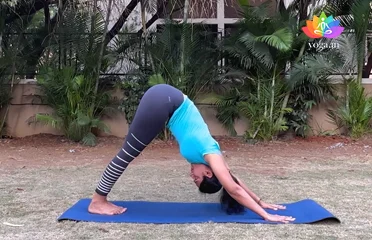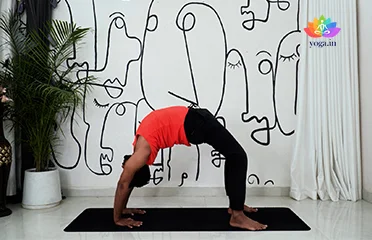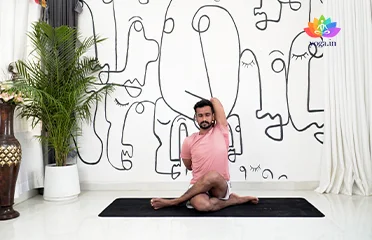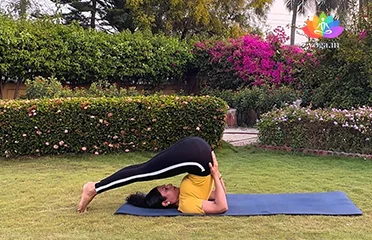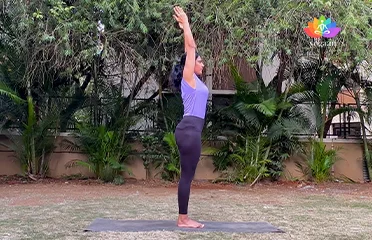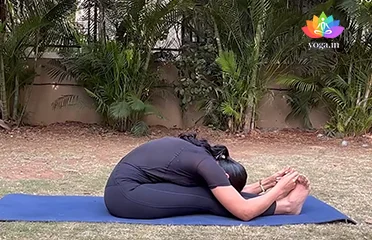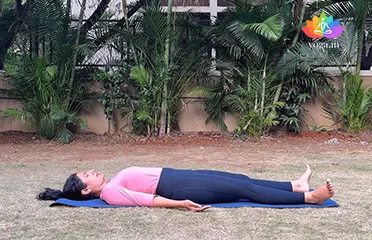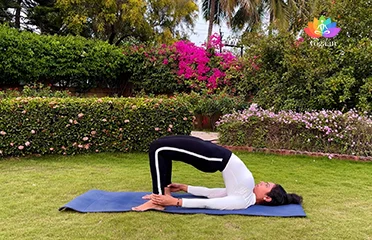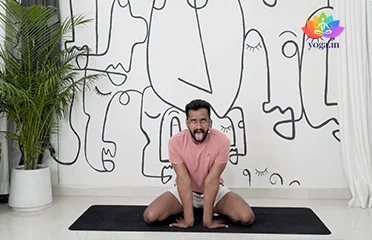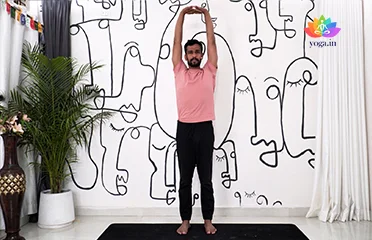Adho Mukha Svanasana (Downward-Facing Do
अधोमुख श्वानासन / Downward-Facing Dog Pose
The sanskrit name is derived from adhas (अधस्) meaning down, mukha [�K]
Chakrasana (Wheel Pose)
चक्रासनI / Wheel Pose
The Sanskrit name is derived from Chakra (चक्रा) means wheel and asana [�K]
Gomukhasana (Cow Face Pose)
गोमुखासन / Cow Face Pose
The Sanskrit name is derived from Gau (गो) meaning cow, Mukh meaning face [�K]
Halasana (Plough Pose)
हलासन / Plough Pose
The Sanskrit name is derived from Hala (हला) meaning plough and asana [�K]
Hastapadasana (Hand to Foot Pose)
हस्तपदासन / Hand to Foot Pose
The sanskrit name is derived from hasta (हस्त) means hands, pada (पदा) [�K]
Paschimottanasana (Seated Forward Bend)
पश्चिमोत्तानासन / Seated Forward Bend
The Sanskrit name is derived from three sanskrit words: Paschima (पश्चिमा) [�K]
Savasana (Corpse Pose)
शवासना / Corpse Pose
The Sanskrit name is derived from Śhava (शव) meaning "corpse" and āsana [�K]
Setubandhasana (Bridge Pose)
सेतु बन्धासन / Bridge Pose
The Sanskrit name is derived from Setu (सेतु) meaning bridge, Bandha [�K]
Simhasana (Lion Pose)
सिंहासना / Lion Pose
The Sanskrit name is derived from Simha (सिंहा) which means lion and [�K]
Tadasana (Mountain Pose)
ताड़ासन / Mountain Pose
The sanskrit name is derived from tada (ताड़ा) meaning mountain and [�K]
- 1
- 2
Finding Relief – Yoga for Breathlessness (A Safe and Supportive Approach)
Yoga can be a valuable tool for managing breathlessness, but it’s crucial to approach it with caution and prioritize seeking guidance from a healthcare professional. Breathlessness, also known as dyspnea, can have various causes, and understanding the underlying reason is essential for creating a safe and effective yoga practice.
Yoga is not a substitute for medical treatment. Always consult a doctor to diagnose the cause of your breathlessness and get guidance on appropriate management strategies.
Understanding Breathlessness:
Breathlessness can be caused by various factors, including:
- Respiratory conditions: Asthma, chronic obstructive pulmonary disease (COPD), and heart failure are some common causes.
- Deconditioning: Lack of physical activity can lead to reduced lung capacity and breathlessness.
- Anxiety: Anxiety attacks can trigger feelings of breathlessness.
Benefits of Yoga for Breathlessness (if cleared by a doctor):
While yoga isn’t a cure, it can offer some benefits for managing breathlessness, particularly if cleared by your doctor:
- Improved Breath Awareness: Yoga emphasizes mindful breathing techniques (pranayama) that can enhance awareness of your breath and potentially improve control.
- Stress Reduction: Practices like meditation and gentle movements can promote relaxation and reduce anxiety, which may indirectly help with breathlessness triggered by anxiety.
- Increased Lung Capacity (with caution): Certain gentle breathing exercises may help improve lung capacity over time, but it’s crucial to proceed with caution and guidance from a qualified professional.
- Improved Strength and Stamina: Gentle yoga exercises can improve overall strength and stamina, which may help reduce breathlessness during daily activities.
Safe Yoga Practices for Breathlessness (if cleared by a doctor):
Here are some general guidelines for incorporating yoga into your routine if you experience breathlessness, but remember to prioritize seeking guidance from a qualified professional and getting clearance from your doctor:
- Focus on Gentle Movements: Prioritize gentle stretches and restorative poses that don’t require strenuous exertion.
- Prioritize Breath Control: Focus on slow, deep, and controlled breathing throughout your practice.
- Listen to Your Body: Stop if you experience any discomfort, shortness of breath, dizziness, or chest pain.
- Modify as Needed: Don’t hesitate to modify yoga poses to suit your individual needs and limitations. Use props like bolsters for added support.
- Practice in a Well-Ventilated Space: Ensure you’re practicing in a well-ventilated area with fresh air circulation.
Additional Tips:
- Warm Up and Cool Down: Perform gentle warm-up exercises before starting your practice and cool down with relaxation techniques afterward.
- Start Slowly: Begin with short practice sessions and gradually increase the duration as tolerated.
- Consult a Qualified Yoga Therapist: Seek guidance from a qualified yoga therapist experienced in working with individuals with respiratory conditions.
- Maintain Open Communication with Your Doctor: Keep your doctor informed about your yoga practice and any changes you experience.
Remember:
Yoga can be a valuable tool for managing breathlessness, but prioritizing professional medical advice is crucial. Listen to your body, and always prioritize your safety and well-being.


